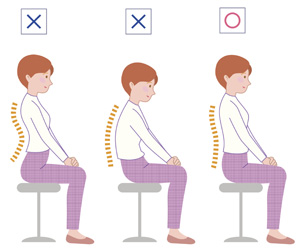Because of the current pandemic, more Americans are working from home than ever. There are many advantages to this situation, such as a flexible schedule and more family/personal time. Many people, however, are reporting that they’re experiencing increased pain in the neck, upper back, shoulders and lower back.
These crazy times are presenting some unique challenges for all of us. Here are my eight simple tips to keep things a little more manageable for you:
1. Keep your regular appointments with our office. Sticking to your care schedule will keep your body on track to make sure any pain is improved and further injuries are prevented.
2. Maintain a schedule. Keep to your routines so that you can maintain that work/life balance that’s vital to our mental and physical health. Wake up at the same time every day, allow yourself to complete your routines, then slide into that work chair just like you would at the office.
3. Get off the couch or out of bed. Don’t work anywhere but a space you’ve created to be your new home office. Though these other places might seem comfortable, they will cause pain in the long run and won’t let you be as productive as you would be in a more office-like environment.
4. Ask your employer for what you need. Some patients say their employers have provided them with information to help set up a successful home office. Others have even helped their employees with a new chair or desk setup! As my mom always says, “It never hurts to ask.”
 5. Set up the right workstation. Think about your comfort and ergonomics, helping to maintain your spinal curves and preventing strain, fatigue and injury. Here is an easy guide:
5. Set up the right workstation. Think about your comfort and ergonomics, helping to maintain your spinal curves and preventing strain, fatigue and injury. Here is an easy guide:
- Sit or stand at a table or desk
- Keep forearms parallel to the floor (and thighs if sitting)
- Use a chair with proper back support
- Put your computer screen at eye level
6. Take breaks often. If you’re at a computer, every 15 minutes you should move around. Take a quick walk around your house or outside. That goes even when you’re back at the office.
7. Stretch and exercise. A stretching routine can be easily worked into your life. If you’re a patient here, you’ve received specific stretches for your condition that you should do. Incorporate some yoga or cardio activity each day.
8. Manage your stress. Sounds easy, right? Not lately, though. Ideas include taking a break from social media and the 24-hour news cycle. Find a book or television show that allows you to lose yourself. Spend time with someone you care about.
I hope these recommendations help. If you have any additional tips that you would like to share with me, I would love to hear them!
